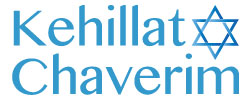Ki Tisa 5779 – Belief, Trust, and Faith – Then and Now
Before the start of 2019 Alan asked a number of us if we’d volunteer to develop and present a D’var Torah. Little did I know that the date I agreed to, February 23rd – today, would bring us Parashat Ki Tissa. We’ve been here before. I had the distinct pleasure to learn and speak about this parasha in 2017. It’s been quite a while and yet it seems as if I haven’t moved very far.
Then I learned that this parasha is considered the longest of the weekly Torah portions found in the book of Exodus (although not the longest in the Torah). It is a popular piece read a number of times throughout the year.
- It is read it on the 21st Sabbat after Simchat Torah, in the month of Adar (in leap years – this is during Adar 1)
- The first part of the parasha, Exodus 30:11–16,regarding the half-shekel head tax, is the maftir Torah reading on the ‘Shabbat Shekalim’ (this year on March 2nd)
- Those portions of the parasha addressing the intercession of Mosesand G-d’s mercy are read on the fast days of Tevet, the Fast of Esther, the Seventeenth of Tammuz, Tzom Gedaliah, and for Mincha on Tisha B’Av.
- Another part, the one that addresses the Shalosh Regalim (Sukkot, Pesach, and Shavuot), is read as the initial Torah reading on the third day (Chol HaMoed) of Pesach.
- Lastly we read a large selection from this parasha as the initial Torah reading on the Sabbath that falls an intermediate day of Passover or Sukkot.
Ki Tissa is a deceptive parasha. It begins quietly and then brings up one of the most gripping stories in the Torah. The parasha opens with the taking of a census and the collection of a head tax to fund the creation of objects for the Cohanim and the Tabernacle.
Next the drama begins to build. Hashem reveals himself to all at Mount Sinai and instructs the people in the 10 commandments. Moses, their leader since before the exodus from Egypt, leaves them to ascend the mountain to study and receive two tablets engraved with the 10 commandments. He tells the people he will be gone for a period of 40 days.
It is surmised that during this doubt, restlessness, and fear began to creep into people’s thoughts. Remember that a bare 6 weeks earlier they were slaves in under the rule of Pharaoh. Unrest takes over the camp and the actions that follow have long range consequences for those that came out of Egypt.
The people, confused and panicking without the leadership of Moses, in a moment of high drama make a Golden Calf and dance before it. They idolize it.
Hashem threatens to destroy them and Moses must intercede.
Coming down the mountain and facing the people, Moses smashes the tablets, the symbol of the covenant. He grinds the calf to dust, mixes it with water, and makes the Israelites drink it. He tells the Levites to punish the wrongdoers.
Moses prays for mercy for the people. He climbs the mountain once again and tries to re-establish the shattered relationship between God and the people. God accepts Moses’ request and tells him to carve two new tablets of stone.
The people were afraid. Had he died? Where was he? Without Moses they felt bereft. He was their point of contact with God. He performed the miracles, divided the Sea, gave them water to drink and food to eat. They didn’t know what to believe and they didn’t know who to trust. They lacked faith.
Now the ideas of belief, faith, and trust were ones that spoke to me as I re-read Ki Tissa.
Here as from the very beginning of our history as a people – belief and trust in the unseen and unknown forms the center of our religion and our lives. It asks us to accept the idea that someone / something larger than us cares about us.
Belief is simple acceptance that a proposition is true, without regard to reason(s) – any reasons could be good, faulty or completely non-existent. Trust is acceptance of a proposition primarily for a social/moral reason rather than an epistemological (evidence-based) reason.
Belief is a product of the mind, while faith is not.
Faith is a product of the spirit.
To have faith in the worst of times will no doubt require us to silence, or at least quiet, the mind.
Trust is inherently different than faith, because trust is something that you build day after day. Faith, on the contrary, is something which is meant to materialize out of thin air; with the only requirement being that you are a little too optimistic / naive
Faith is something we possess. Trust is something we do.
Ki Tissa tells us that Moses with Hashem is hard at work grappling with very long and precise directives, but the Israelites have no idea what’s going on. Instead, they are down in the desert with no leader, no permanent home, and no sense of what they should be doing or of what’s next.
As humans we are built to seek tangible connections. The tabernacle, the tablets, and the rituals were designed to be their anchors.
We crave regular and real reminders of abstract ideas — hopefully inspiring ones.

